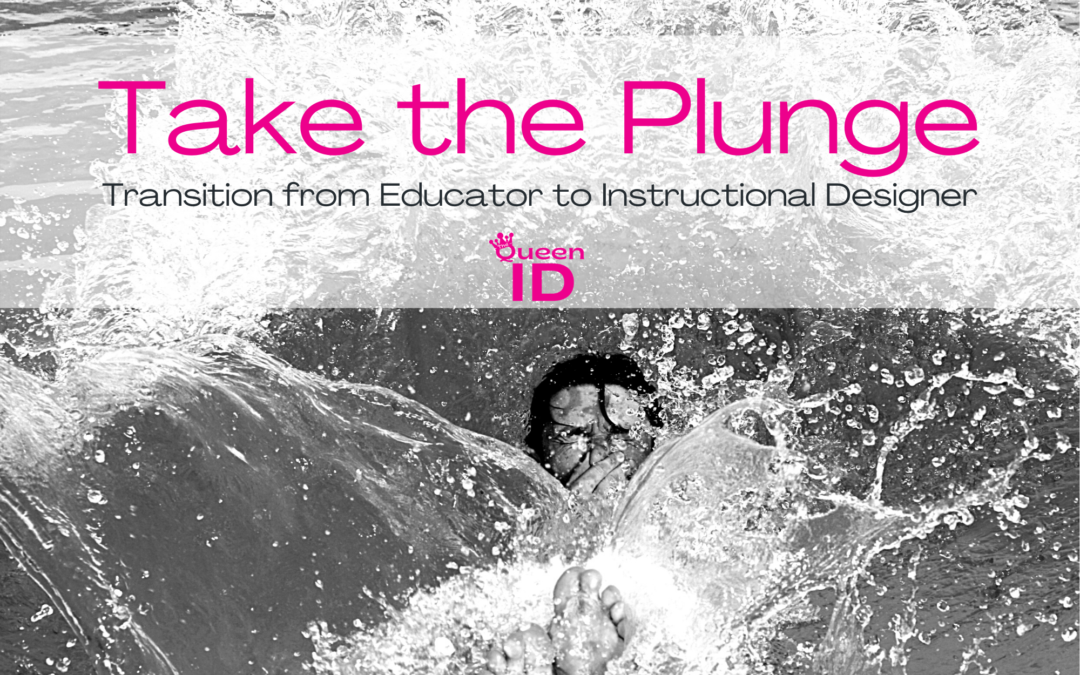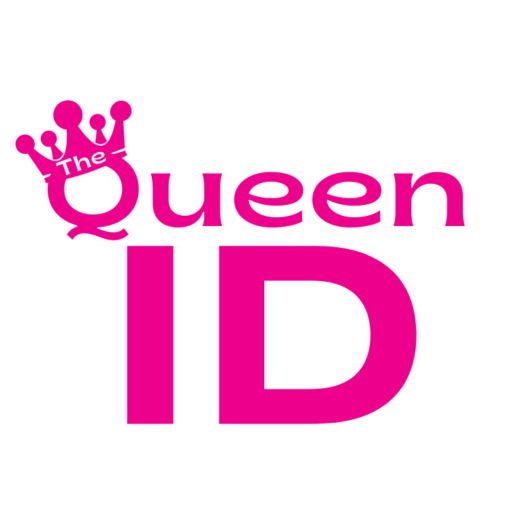
Take the Plunge – Transition from Educator to Instructional Designer
When You are Ready for a Change – Take the Plunge
I have experienced several big changes over the years. I unexpectedly began working remotely like so many others when the COVID-19 pandemic began. I bought my first house in October 2020 and moved away from my hometown. The biggest change for me was leaving a nine-year teaching career and becoming an Instructional Designer (ID).
This change was life-altering for me. The crippling stress and anxiety I had developed were gone. For the first time in my adult life, I feel financially secure and am no longer living paycheck to paycheck. I have found a new passion. Best of all, I love what I do again. Now, I spend my free time helping others make this same transition – Educator to ID. I want them to experience what I have experienced and to know there truly is a career beyond teaching for educators. However, a huge change like this can be scary.
I often hear seeds of self-doubt creep into those that so desperately want to leave teaching. It starts with not knowing exactly where or how to begin. Then, once they begin, they become paralyzed or overwhelmed with all that there is to learn about the corporate Learning and Development (L&D) industry. I am here to say: Throw caution to the wind and go for it! Do it messy. Don’t be afraid to stumble. Take baby steps to meet your goal or do it in one giant bound! The point is – START!

As a teacher, you are NOT starting from scratch. You already have a strong foundation as an Instructional Designer. You have proven you know, understand, and can apply learning theories and instructional design models. Otherwise, you would not have earned your degree or teaching license. You have practical experience designing instruction every time you created a lesson plan. Let’s not forget how creative you are to be able to keep children and teens engaged in learning. This particular skill comes in handy when designing learning for adults too (wink, wink). Be encouraged that you have the tough stuff in the bag already.
Here are my top tips for making a smooth transition to Instructional Design:
- Speak the corporate language for Learning and Development. Education and Corporate Learning and Development speak two different languages. They often say the same things but there is rarely a translator reading your resume or in the interview. My advice is to read the job descriptions for ID roles to get a feel of the verbiage. Take the step to reword your resume with the corporate vernacular where appropriate. Network with others already in the ID space and observe how they interact and what they say on LinkedIn. Ask questions if you hear or see an acronym with which you are unfamiliar. Get in the mindset of saying things like designed instruction versus planned lessons.
- Learn the industry tools. There are many tools of the trade, but here is the shortlist and most used in the industry.
- Articulate 360 –This a suite of products used to develop eLearning. Storyline 360 is the specific authoring tool you should concentrate on learning first. Articulate 360 offers a 30-day free trial. Storyline’s toolbar reminds me of MOS PowerPoint but on steroids. If you are proficient with PowerPoint, I think you will feel comfortable learning the features of Storyline – familiar and new.
- Camtasia – This product allows you to create professional videos by screencasting or inserting your own pictures and videos to edit. There are many features in this product that can turn a boring training video into an engaging and fun video. In addition to adding custom audio, soundtracks, animations, and callouts, you can also insert quizzes within your video. Camtasia offers a 30-day free trial.
- Adobe Creative Cloud – This is a suite of products used to create and manipulate graphics. The ID industry uses PhotoShop and Illustrator the most out of the Creative Cloud suite. If new software intimidates you, you may want to wait on learning this one. It is not imperative to know how to use these tools to land most ID jobs, but it is good to be familiar with them. In most cases, it will be available to you to use or there will be a visual/graphic designer on your team. Adobe Creative Cloud offers a 7-day free trial. So, perhaps check out some tutorials first before diving in with this one.
- Canva – This is another graphic design tool. It is extremely user-friendly and one of my favorite tools. Canva offers a free account for users. With your free account, you can access any of the free elements, photos, templates, etc. You can also pay per element, photo, or template if you choose to use one from the upgraded assets. A Canva Pro subscription is very affordable with current pricing at $9.99 per month. Canva is not necessarily used by companies with ID teams. Rather, I am suggesting this tool help you rapidly create visual assets for your portfolio.
- Create a portfolio. A well-developed portfolio will get you ranked higher in the candidate pool than someone without a portfolio. It can often speak louder than your lack of experience. Employers want to see that you have the skills to develop professional training. Your portfolio should have a mixture of assets: eLearning, multi-media video, job aid, infographic, and instructor-led training (ILT). Also, think quality over quantity when showcasing your work. It is best to have a couple of assets done well versus a lot of assets that still need much tweaking. It’s easiest to house your portfolio assets on a website. There are many free website builders out there: Wix.com, Weebly.com, WordPress.org or .com, Google sites, etc.
- Fill in knowledge gaps. Yes, you have an extraordinarily strong foundation and a lot of experience under your belt as an experienced educator. However, I would be remised if I didn’t tell you to brush up on adult learning theories/theorists and instructional design models. You will see many similarities to the theories and models you already know, and you can easily transfer your prior knowledge. Being able to evaluate a courses success using Kirkpatrick’s 4 Levels of Evaluation or implement the ADDIE model when working on a training course is important in being a successful ID.
You can certainly make this transition on your own, but it is always easier with support. IDOL Courses Academy is a great place to garnish that support. The Academy can guide you through each of the steps mentioned above. You will also become part of a community of people who have been successful in their transition or going through steps the same as you.
Either way, when you decide to make a change as big as pivoting careers, you must dive into the deep end. Ignore the negative voices telling you there is no career for you outside of teaching, or that you are an imposter in the field because you came from a teaching background. You are exactly what the industry needs.
